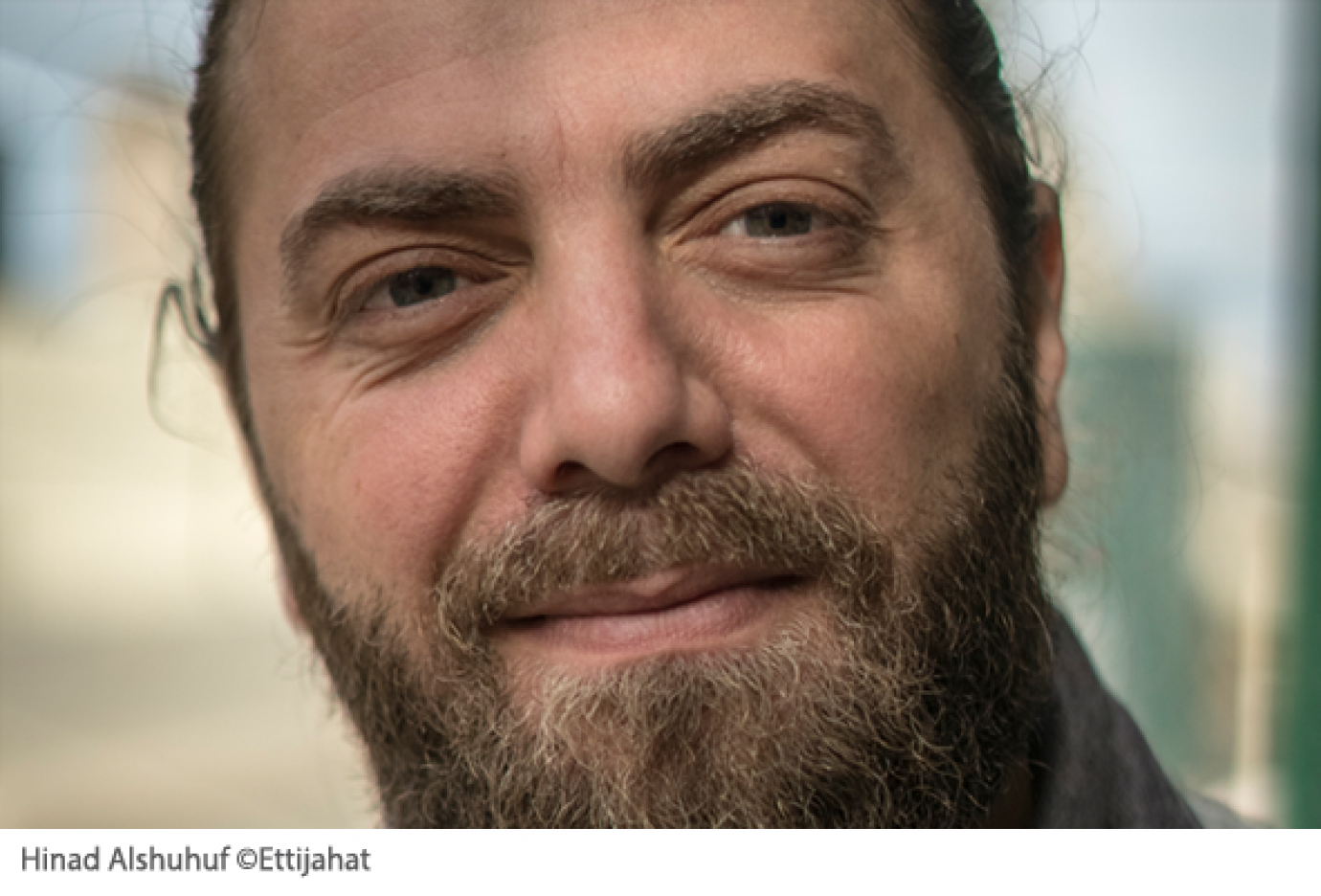
Patriarchal Authority in the Cultural Heritage of Jabal al-Arab a Research under preparation by Hinad Alshuhuf
Aug 2019
Researcher Hinad Alshuhuf, one of the researchers of the 6th edition of the Research program, is in the final stages of concluding his research entitled Patriarchal Authority in the Cultural Heritage of Jabal al-Arab. On the content of the research and his personal and professional motives behind his achievement, and on some of the difficulties he encountered and some of his findings, Hanad writes the following lines:
The study tackles the problematic relationship between the Patriarchate and the cultural heritage of Jabal Al Arab as a cultural, social and political phenomenon in which male domination prevails over decision-making positions in the context of relations between the individual and social structures such as the extended family and the religious community. Where it tries to highlight the most prominent manifestations of the Patriarchate in the cultural heritage of this region and the description of cultural mechanisms contributing to the production and dedication of the Patriarchate. All through the study of some non-cultural resources such as values, customs and traditions religious beliefs, documented in a number of sources dealing with customs and traditions in Jabal Al Arab.
Some observations on the relation of the non-tangible cultural heritage to the Patriarchate were the primary reasons for choosing the subject. The non- tangible cultural heritage, consisting of values, social relations, ritual rituals, customs, traditions and beliefs ... is a collection of reflective images of the characteristics of groups, which makes it an attractive field for the study of social and cultural phenomena, especially those of authoritarian dimensions. The choice of the study area was driven firstly by belonging to it in its inception, secondly by the desire to move idle of the concepts, and thirdly based on the privacy of social formation.
The main difficulties were encountered in the long path of the study plan where it was not feasible to start studying the phenomenon of the Patriarchate in cultural heritage without reviewing its theoretical frameworks, presenting its concept, its origin, the characteristics of its societies, its roots in the Arab region, and its manifestations in the social structures. The theoretical aspect of the research, which led to the study of the relationship between the Patriarchate and the cultural heritage, and I have tried, using the observations of Dr. Hassan Abbas, the supervisor of the research, to exclude all that does not serve the problem of research and its questions.
This legacy has produced, with its great breadth, another difficulty of narrowing the field of study, examining the values, customs and traditions of religious beliefs and religiosity, and excluding other non-tangible cultural resources such as folk tales or the decline of their presence in social and cultural life, Folk poetry, and songs.
The research found the most prominent manifestations of the Patriarchate in the cultural heritage of Jabal Al Arab, categorizing them into three main frameworks: the Patriarchate in religious beliefs and religiosity, the Patriarchate in the power relationship between men and women, and the Patriarchate in the relations of generation. Research within these frameworks has distinguished a range of cultural mechanisms that generate and perpetuate male domination.
The research concluded by assuming that the roles of these mechanisms are integrated sequentially: the patriarchal dynamics of the power relationship between men and women contribute to the primal establishment of male domination, and are responsible for placing males and females at different levels of power hierarchy by being men or women Socially acceptable). In the social framework of the family, they contribute to the dynamics of the Patriarchate in the relationship between the two. The religious patriarchate may be lagging behind the process of upbringing, given the way of life that is distinct from religiosity in Jabal al-Arab.
Despite the growing use of the term ‘patriarchal’, it remains vague and not entirely connected to its real impact. I believe that understanding the cultural mechanisms of patriarchal formation may help to bring this mental connection closer. The Patriarchate is neither a metaphysical nor an eternal phenomenon, which we do not know at the beginning. It originated in a historical process that lasted more than 2500 years. Therefore, the research sought to develop an analytical tool that raises our sensitivity to the unequal relations of power, especially those related to culture and heritage of a general nature in any group, with a view to distinguishing them in the context of home, social and school education. As well as shed light on the tools of patriarchal control of political and tribal systems.
Hinad Alshuhuf
Hinad holds a bachelor's degree in Petroleum Engineering and participated in the design and implementation of a number of projects within civil frameworks such as heritage education and empowerment in citizenship issues.



_(1)_(1)/thumb_150x120_2_douroub_2024_-_website_news_page_(without_logos)_(1)_(1).png)
_(1)/thumb_150x120_2_life_initiative_2024_-_website_news_page_(without_logos)_(1).png)


